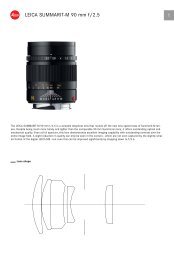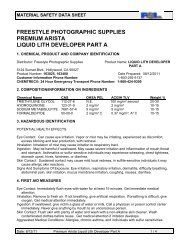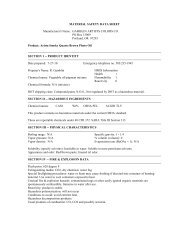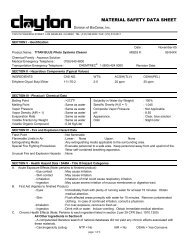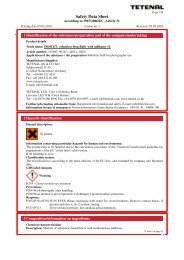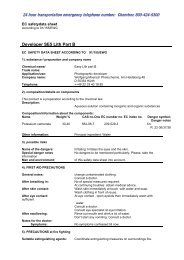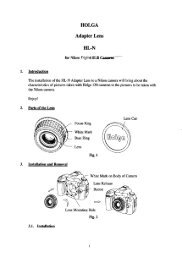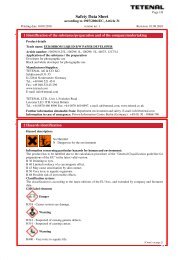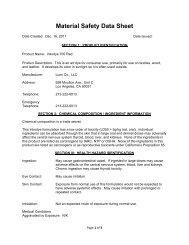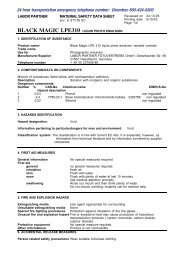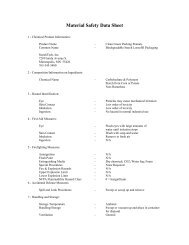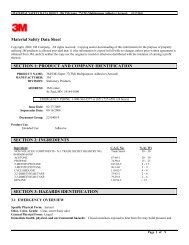T-MAX 100 Direct Positive Developing Outfit - Freestyle ...
T-MAX 100 Direct Positive Developing Outfit - Freestyle ...
T-MAX 100 Direct Positive Developing Outfit - Freestyle ...
You also want an ePaper? Increase the reach of your titles
YUMPU automatically turns print PDFs into web optimized ePapers that Google loves.
Revision Date: 10/22/2008<br />
000000012186/Version: 1.1<br />
Print Date: 01/13/2009<br />
Page: 2/7<br />
Material Safety Data Sheet<br />
Extinguishing Media: Use extinguishing measures that are appropriate to local circumstances and the<br />
surrounding environment.<br />
Special Fire-Fighting Procedures: None (noncombustible)<br />
Hazardous Combustion Products: None (noncombustible)<br />
Unusual Fire and Explosion Hazards: None.<br />
6. Accidental release measures<br />
Absorb spill with vermiculite or other inert material, then place in a container for chemical waste. Clean<br />
surface thoroughly to remove residual contamination.<br />
7. Handling and storage<br />
Personal precautions: Avoid breathing mist or vapour at concentrations greater than the exposure<br />
limits. Avoid contact with eyes, skin, and clothing. Use only with adequate ventilation. Wash thoroughly<br />
after handling.<br />
Prevention of Fire and Explosion: No special technical protective measures required.<br />
Storage: Keep container tightly closed. Keep away from incompatible substances (see Incompatibility<br />
section.)<br />
8. Exposure controls/personal protection<br />
Occupational exposure controls<br />
Chemical Name Regulatory List Value Type Value<br />
Sulphuric acid OSHA Z1 Permissible exposure limit 1 mg/m3<br />
ACGIH time weighted average 0.2 mg/m3<br />
Form of exposure: Thoracic fraction.<br />
Ventilation: Good general ventilation should be used. Ventilation should be sufficient so that applicable<br />
occupational exposure limits are not exceeded. Ventilation rates should be matched to conditions.<br />
Supplementary local exhaust ventilation, closed systems, or respiratory protection may be needed in<br />
special circumstances.<br />
Respiratory protection: None should be needed. If engineering controls do not maintain airborne<br />
concentrations below recommended exposure limits, an approved respirator must be worn. Respirator<br />
type: Acid gas. If respirators are used, a program should be instituted to assure compliance with<br />
applicable federal, state, commonwealth, provincial, or local laws and regulations.<br />
Eye protection: Wear safety glasses with side shields (or goggles).<br />
Hand protection: For operations where prolonged or repeated skin contact may occur, impervious<br />
gloves should be worn.




